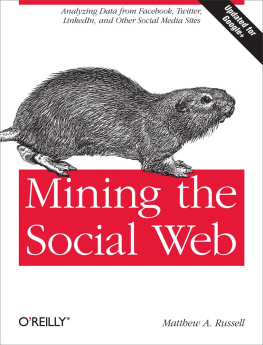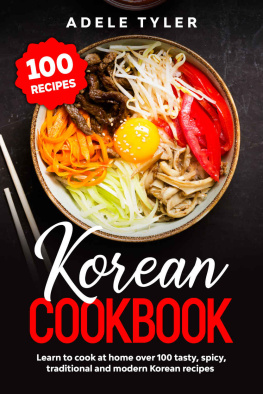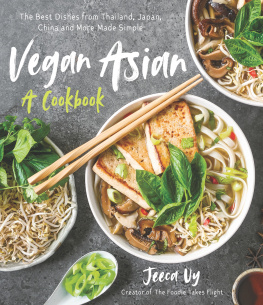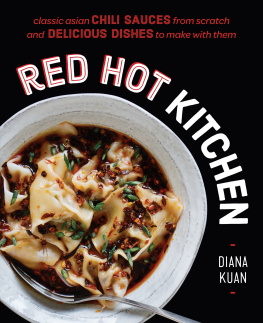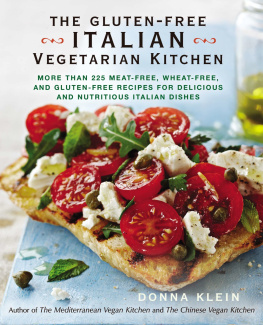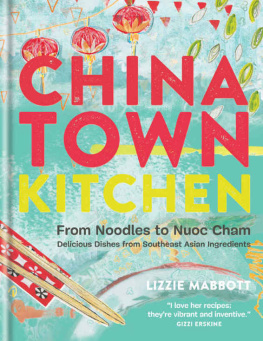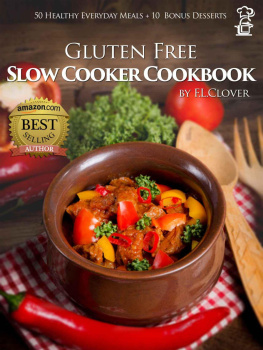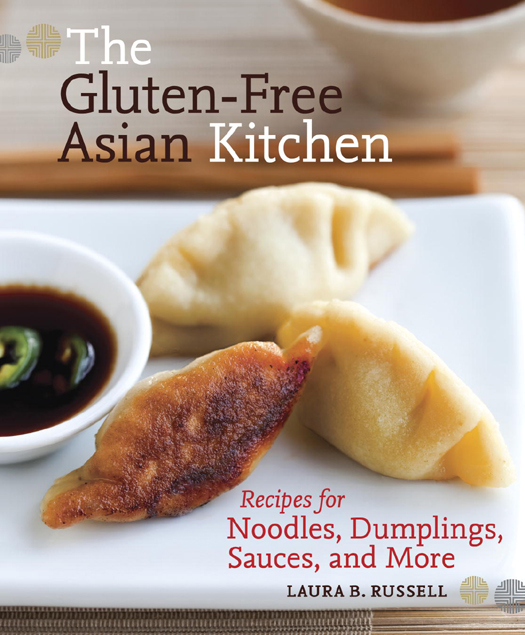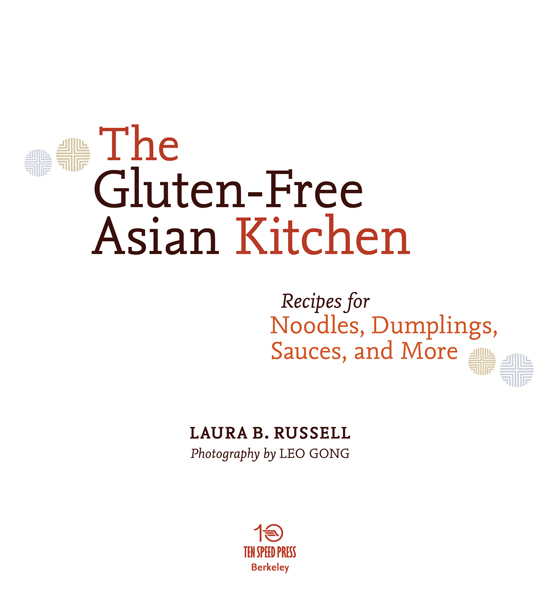Copyright 2011 by Laura B. Russell
Photographs copyright 2011 by Leo Gong
All rights reserved.
Published in the United States by Ten Speed Press, an imprint of the Crown Publishing Group, a division of Random House, Inc., New York.
www.crownpublishing.com
www.tenspeed.com
Ten Speed Press and the Ten Speed Press colophon are registered trademarks of Random House, Inc.
Library of Congress Cataloging-in-Publication Data
Russell, Laura Byrne.
The gluten-free Asian kitchen: recipes for noodles, dumplings, sauces, and more / Laura Byrne Russell.
p. cm.
Summary: 100 gluten-free recipes focused exclusively on the cuisines of China, Korea, Japan, Thailand, and VietnamProvided by publisher.
Includes bibliographical references and index.
1. Gluten-free dietRecipes. 2. Cooking, Asian. I. Title.
RM237.86.R86 2011
641.5638dc22
2011004434
eISBN: 978-1-58761-367-8
Cover design by Toni Tajima
Food styling by Karen Shinto
Prop styling by Carol Hacker
v3.1
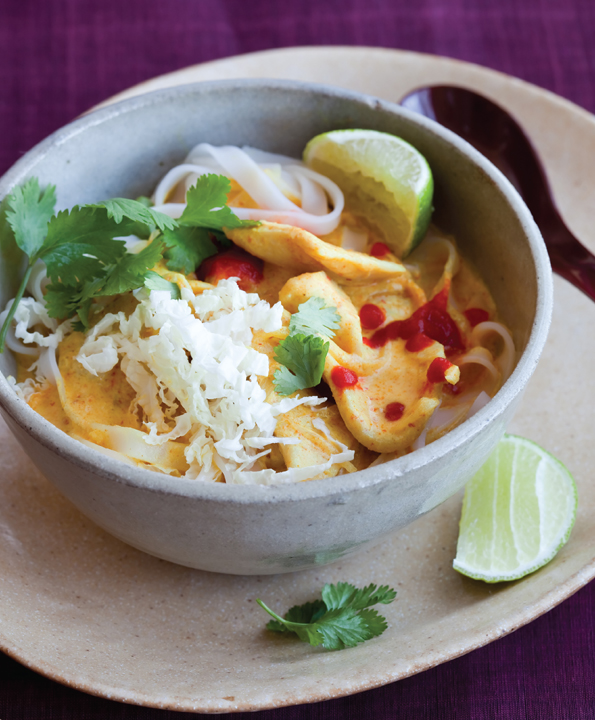
Contents
For Patrick
From those first garlicky snails at the
Red Rooster to breakfast sushi in Tokyo,
our two decades of dining adventures have
been second to none.
Cheers!

Introduction
A few years ago, I sat with my husband and two children in a local Chinese restaurant trying desperately to find something on the menu I could eat that was gluten free. Two women sat down at the table next to us and one of them proceeded to tell her dining companion that she was under strict doctors orders to avoid gluten. A kindred spirit, I thought, until she laughed it off and stated authoritatively, Its no big deal; I just cant order the noodles. My husband reacted calmly as I tried to jump out of my seatand into their conversationputting his hand on my arm to keep me in place while quietly shaking his head no. Its not your concern, he said.
Oh yes, it is.
My own experience with gluten intolerance started shortly after the birth of my second child. I started fighting off a bevy of bizarre neurological symptoms, beginning with localized nerve pain and eventually growing into facial numbness and paralysis of the left side of my face. At its worst, the numbness traveled down the entire left side of my body. Some of these symptoms remained firmly in place for a couple of years, while others retreated as quickly as they appeared; all were puzzling and scary. About four years into this, and not a single step closer to finding an answer, I turned my focus from fruitlessly searching for a diagnosis to improving my general health. I started a one-month elimination diet, cutting out most foods that were allergenic or inflammatory, including gluten, dairy, soy, corn, caffeine, alcohol, and sugar. Three weeks later, I felt better than I had in years and was completely symptom free. At the end of the month, I took that first bite of a much-missed bagel andwhoosh!nearly instant facial numbness.
I had discovered my bodys aversion to gluten.
At that point I stopped eating gluten completely, which includes anything containing wheat, barley, rye, or cross-contaminated oats. I dont have a problem with this when Im eating at home, but the story changes once I walk out the front door. Dining in any restaurant can be difficult, but going out for Asian food remains my biggest frustration. As I soon discovered, many of the essential ingredients in Asian cooking are wheat-based. Dumplings, pancakes, and many types of noodles are blatant offenders, but its the omnipresent sauces, quietly painting each bite with gluten, that are harder to avoid. Soy sauce, a condiment made from fermented soybeans and wheat, is an exceedingly common ingredient in Asian cooking. Other sauces, such as teriyaki sauce and some peanut sauces, are based on soy sauce. Hoisin sauce and oyster sauce are routinely thickened with wheat flour; hoisin sauce may also be sweetened with a wheat paste. In trying to dodge these roadblocks, it can be hard finding even a simple stir-fry thats safe to eat. Certainly over the past few years the whole concept of gluten-free dining has progressed at a rapid speed, but with much of the commercial focus on getting that bread, that pizza, or that cake back on the plate. But what about other foods that we all love, such as Japanese, Korean, and Chinese, which are some of my personal favorites? I decided that its time to shine the spotlight on Asian cooking.
During my gluten-eating days, I frequented Asian restaurants in New York City, Portland, and San Francisco with great vigor. (Not to mention a revelatory food-focused visit to Tokyo with my husband.) As a recipe developer I gobbled up not only the delicacies set before me, but information as well. I studied menus, quizzed helpful chefs, and scoured markets in Chinatown, picking up a bit more knowledge each step of the way. Eventually I started cooking my way through Asian cookbooks at home, a fun and satisfying experience. By the time I had to give up gluten, I realized my newfound skills were critical to my continued enjoyment of Asian food. Any initial sadness I felt over losing gluten was trumped by my delight in knowing how to cook. I somehow felt like sharing this knowledge with other people in the same situation would make the whole ordeal worthwhile.
Gluten free or not, I want everything I eat to be delicious. And while dining out remains one of my favorite pastimes, if I cant find what Im craving in a restaurantmore and more common since I went gluten freethen I cook it at home.
The one hundred recipes in this book originate from the Thai, Korean, Chinese, Japanese, and Vietnamese cuisines I love so much. My goal is not to reinvent the wheel or hand you a bunch of strange Asian-fusion concoctions, but to provide solid recipes for some of the great Asian foods you may find yourself missing since youve gone gluten free. In this book, Ive tried to make old favorites accessible again, and I hope to introduce a few new ideas into the mix as well.
In creating this gluten-free Asian lineup, I found the recipes fell into three categories:
1. Major overhaul: Recipes that needed some type of big conversion to make them gluten free. This includes rethinking panko breadcrumb coatings, wheat-based thickeners, dumpling dough, batters, and traditional sauces.
2. Tweaking/minor substitution: Recipes that required a simple substitution to create a gluten-free version, such as using wheat-free tamari or gluten-free oyster sauce.
3. Naturally gluten free: Some recipes are gluten free by nature, specifically many fish saucebased Thai and Vietnamese recipes. Generally, when I give you a naturally gluten-free recipe, I am hoping to introduce an ingredient or a technique that might be new to you. For instance, Korean rice cakes are gluten free, but maybe youre not familiar with them. Vietnamese salad rolls dont contain gluten, but you may appreciate instruction on using the rice paper needed to make them. Or, if youve already mastered salad rolls, perhaps youll enjoy some of the other interesting ways you can use rice paperas a crisp wrap for sauted salmon, for example.




